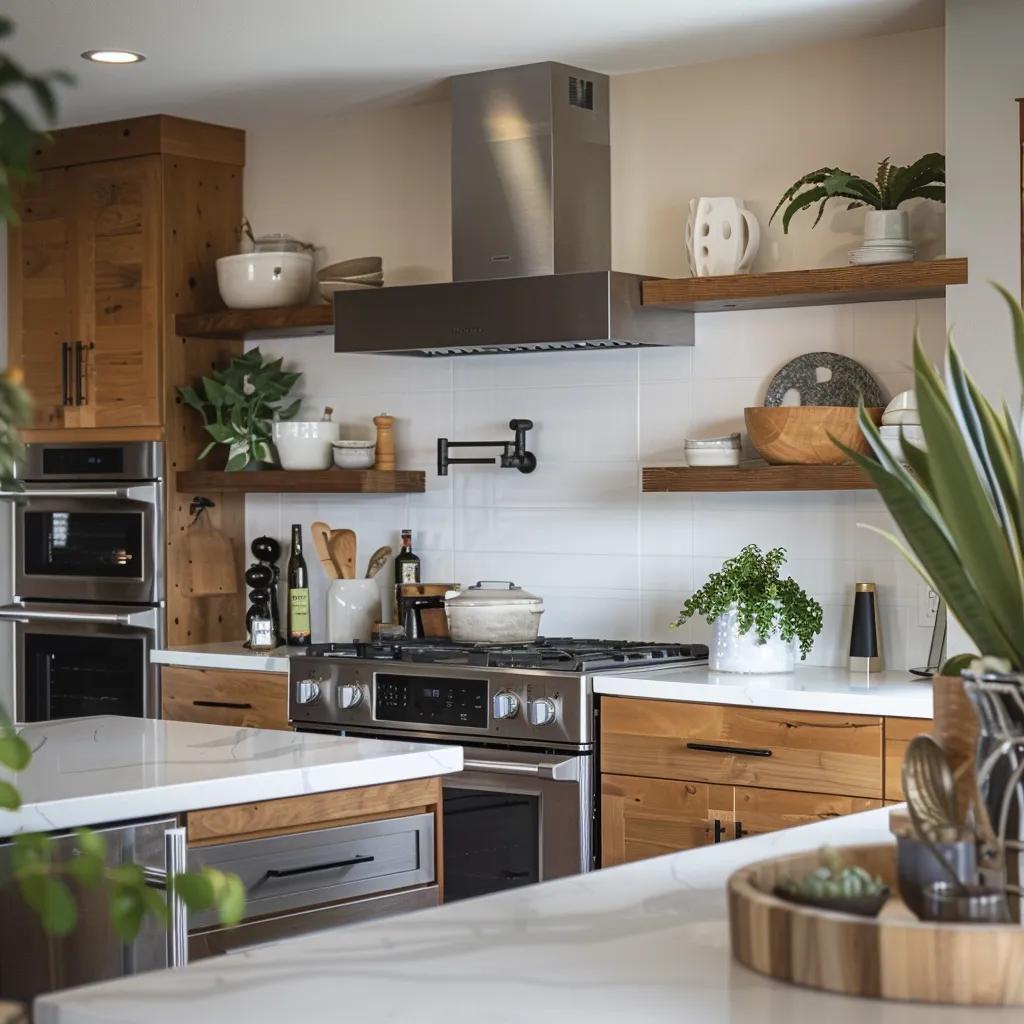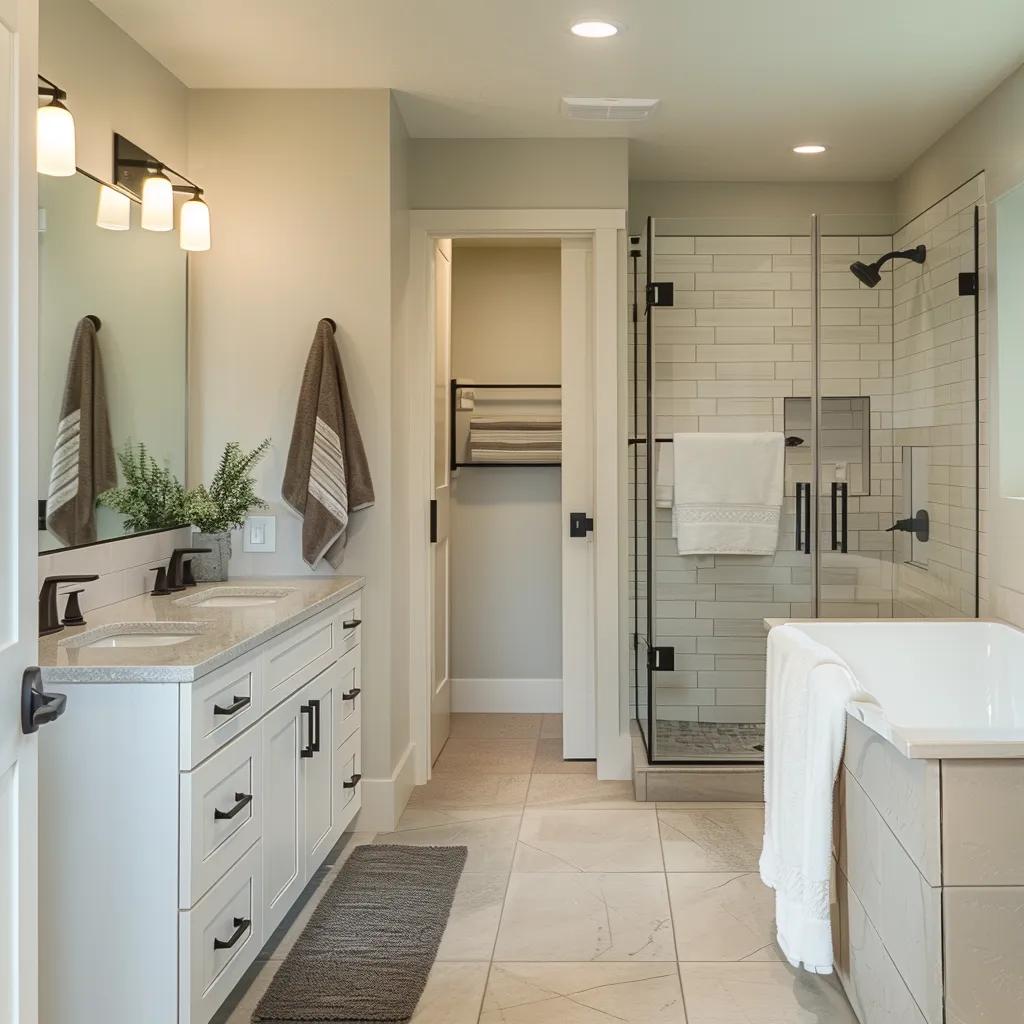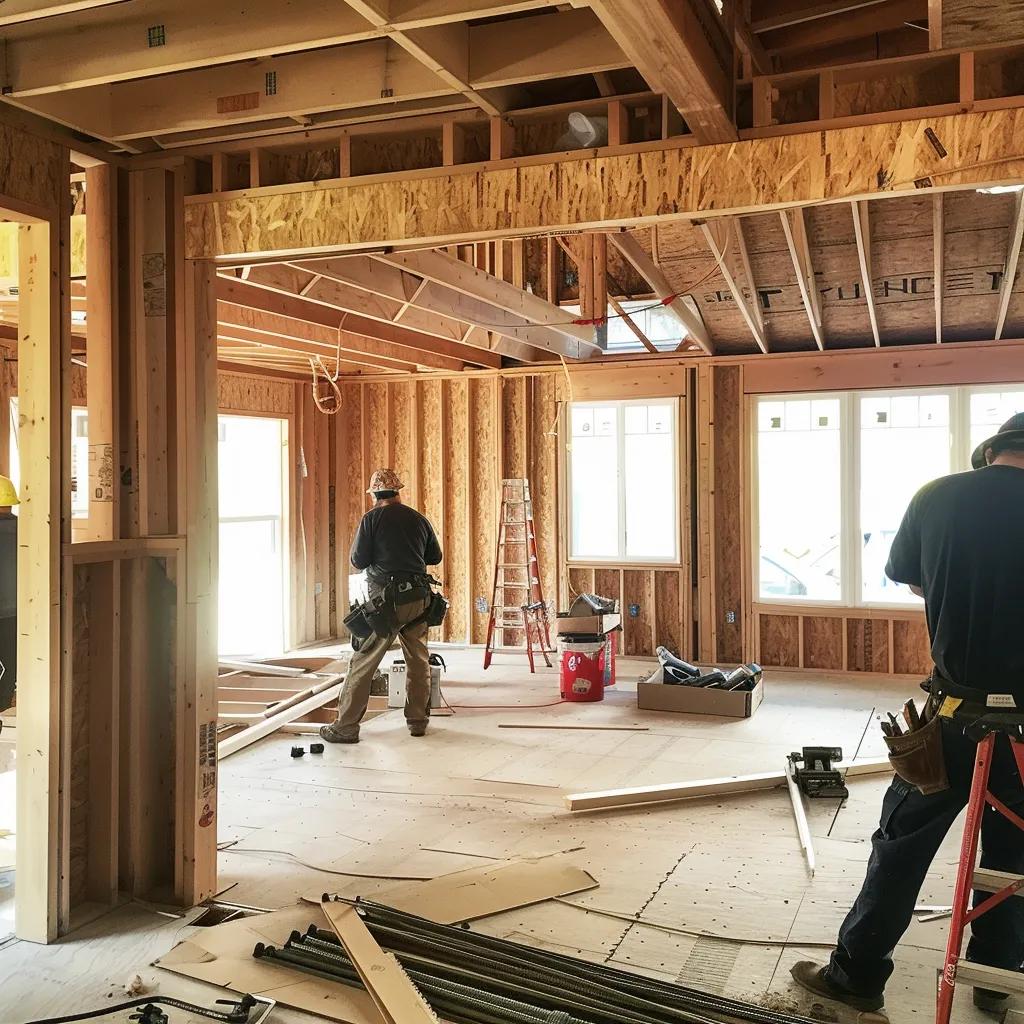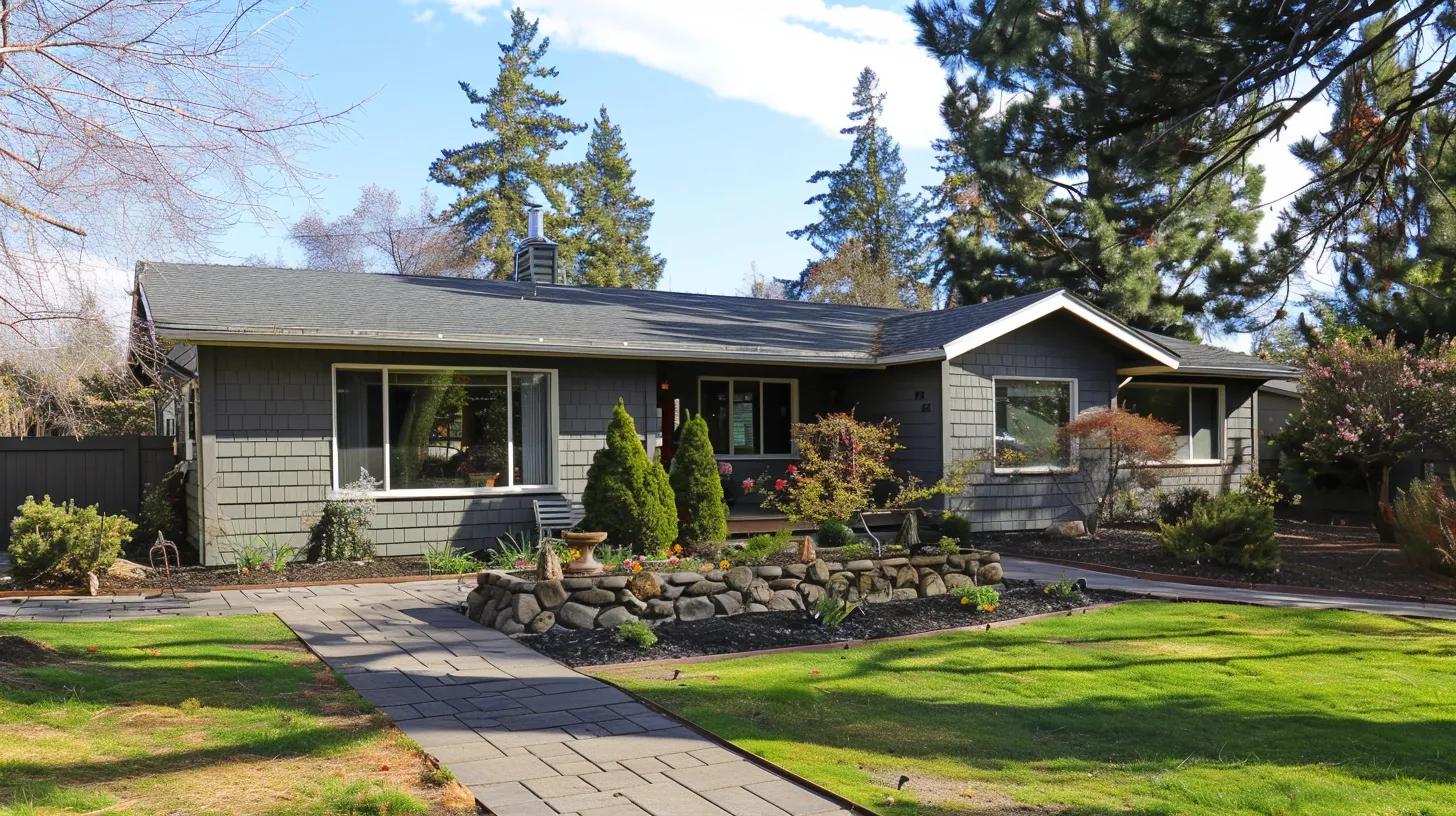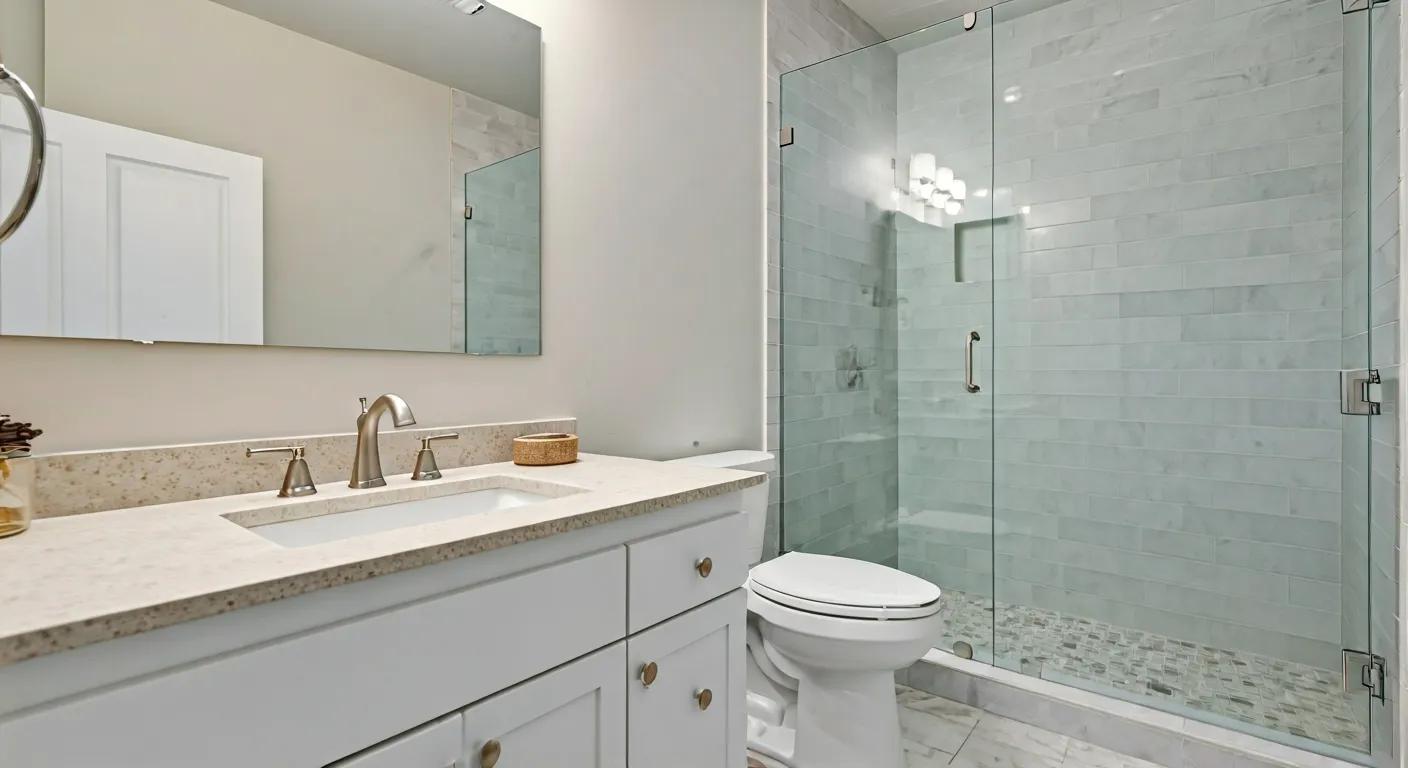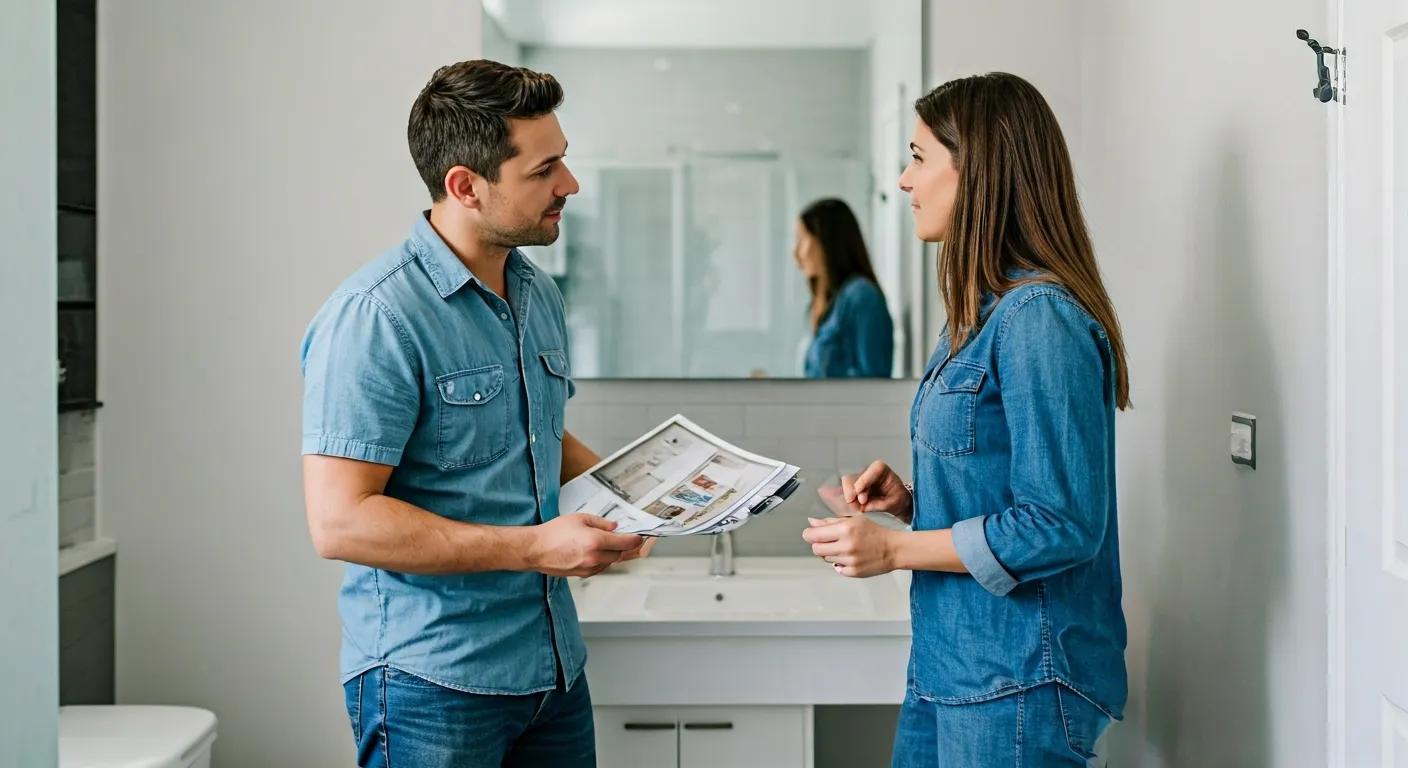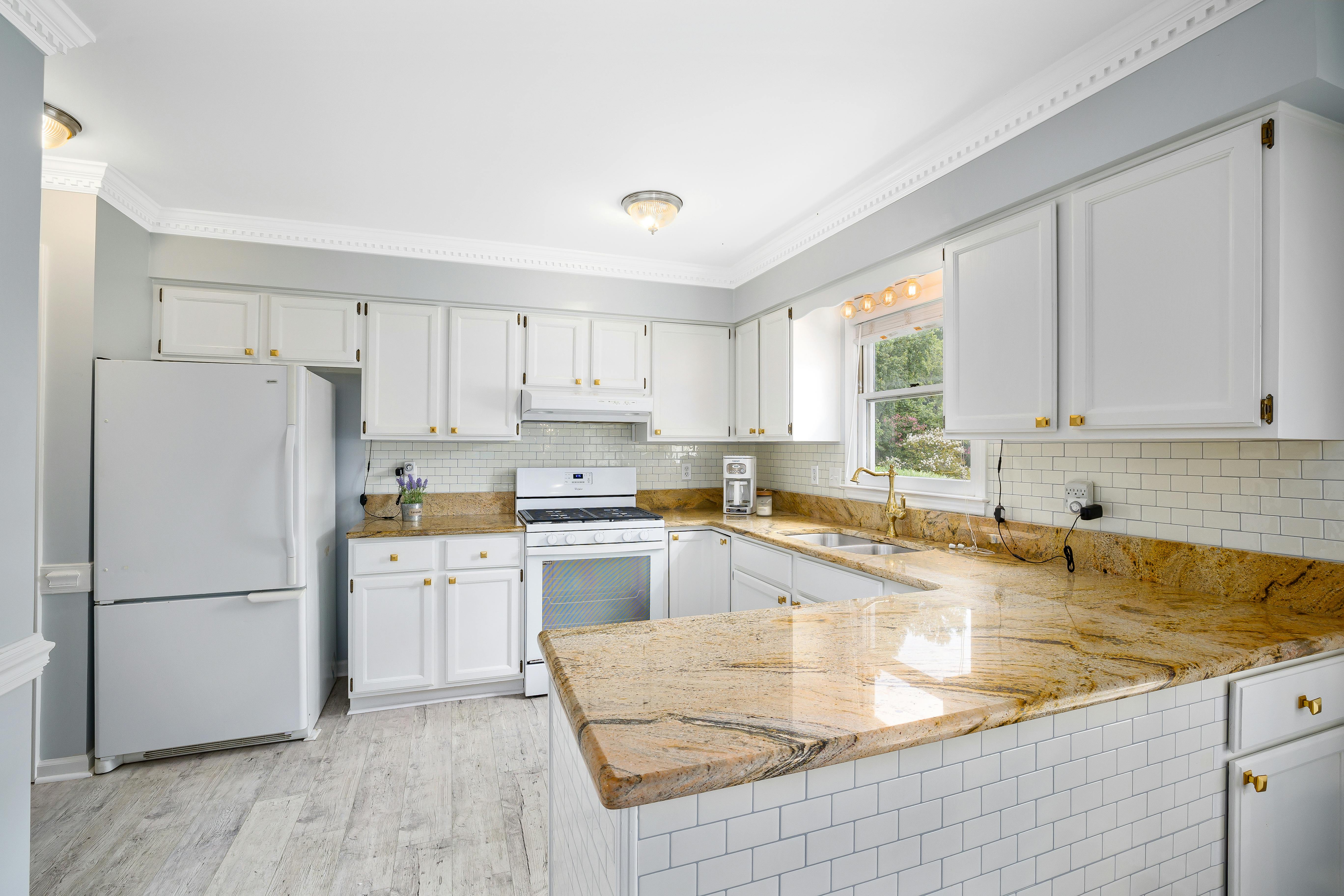Spokane Home Remodeling Guide 2025: Costs, Trends, and Contractor Tips for Homeowners
Remodeling your Spokane residence in 2025 can cost anywhere from a few thousand dollars for minor upgrades to well over six figures for full-scale renovations—understanding local benchmarks and best practices is essential. This guide delivers the latest Spokane home remodeling costs, emerging design and technology trends, a contractor-vetting roadmap, project planning fundamentals, detailed deep dives on popular renovations, and answers to common homeowner questions. You’ll discover how to budget effectively, select licensed professionals, integrate eco-friendly and smart-home features, and avoid permit pitfalls before transforming your property.
What Are the Average Spokane Home Remodeling Costs in 2025?
Average Spokane home remodeling projects range from $20,000 for modest updates to $120,000 for comprehensive overhauls, with cost drivers including scope, materials, labor and permit fees. Accurate cost projections help homeowners set realistic budgets and secure appropriate financing for every renovation phase.
Spokane Home Remodeling Costs
The average cost of home remodeling projects in Spokane can range significantly, from modest updates to comprehensive overhauls. These costs are influenced by factors such as the scope of work, materials used, labor expenses, and permit fees, which homeowners should consider when planning their projects.
Spokane Home Remodeling Guide 2025
This information is directly related to the article's discussion of the costs associated with home remodeling in Spokane.
How Much Does a Spokane Kitchen Remodel Cost?
A kitchen remodel in Spokane typically falls into three tiers—basic, mid-range and high-end—based on cabinetry, countertops and appliance selections.
| Remodel Tier | Key Features | Typical Cost |
|---|---|---|
| Basic Refresh | Painted cabinets, laminate counters, fixtures replacement | $10,200 – $16,000 |
| Mid-Range Upgrade | Semi-custom cabinets, quartz or butcher block counters, stainless appliances | $20,400 – $29,700 |
| Luxury Renovation | Custom white oak cabinetry, high-end quartz/soapstone counters, built-in smart appliances | $35,000 – $50,000 |
Kitchen remodel budgets hinge on cabinetry choices and countertop materials, which account for roughly 30–40% of total costs. Understanding these drivers prepares homeowners to make informed style and functionality decisions before ordering materials.
What Is the Typical Bathroom Remodel Price Range in Spokane?
Bathroom renovations vary from simple facelifts to lavish spa retreats, with cost tiers reflecting fixture quality and scope.
| Remodel Level | Features | Estimated Cost |
|---|---|---|
| Standard Update | New vanity, mid-grade fixtures, tile wall backsplash | $8,000 – $12,000 |
| Mid-Tier Remodel | Custom cabinetry, quartz counters, frameless glass shower | $12,000 – $20,000 |
| Spa-Like Retreat | Soaking tub, smart toilet, heated floors, high-end tile and fixtures | $25,000 – $40,000 |
Material selection and labor rates strongly influence bathroom budgets; opting for eco-friendly fixtures and energy-efficient lighting can boost long-term savings while modernizing your space for optimal comfort.
How Much Does Basement Finishing Cost in Spokane?
Finishing an unfinished basement transforms underutilized space into livable square footage at an average of $45 to $55 per square foot.
| Size Range | Conversion Features | Total Cost Range |
|---|---|---|
| 500 sq ft | Basic drywall, flooring, lighting | $22,500 – $27,500 |
| 800 sq ft | Bathroom addition, egress window, built-in storage | $36,000 – $44,000 |
| 1,200 sq ft | Full recreation area, wet bar, home office | $54,000 – $66,000 |
Adding insulation, moisture barriers and egress improvements is critical for code compliance and comfort, especially given Spokane’s seasonal humidity fluctuations.
What Are the Costs for Spokane Home Additions and Expansions?
Home additions—such as bump-out kitchens or master suites—average $120 to $250 per square foot based on complexity and finishes.
| Addition Type | Typical Scope | Price per sq ft |
|---|---|---|
| Kitchen Bump-Out | 200 sq ft expansion with new cabinets | $120 – $190 |
| Master Suite | 400 sq ft bedroom, closet, bath | $120 – $250 |
| Sunroom Addition | 300 sq ft with glass walls, HVAC tie-in | $150 – $250 |
Permit fees, foundation work and integration with existing HVAC systems represent major cost factors in addition projects.
What Are the Expenses for Roofing, Flooring, and Water Damage Repairs in Spokane?
- Roofing: Asphalt shingle re-roofing averages $5.50–$7.50 per sq ft; metal roofing runs $8.00–$12.00 per sq ft.
- Flooring: Hardwood floors cost $6.00–$12.00 per sq ft installed; luxury vinyl plank falls around $4.00–$7.00 per sq ft.
- Water Damage Repairs: Mold remediation and structural drying range from $3,000–$10,000 depending on severity.
Which Factors Influence Spokane Remodeling Costs?
Remodeling budgets in Spokane fluctuate based on materials, labor rates, permit costs and design fees. Key cost drivers include:
- Materials Quality: Higher-grade cabinetry, countertops and fixtures raise budgets by 20–40%.
- Labor Availability: Skilled-trade demand in Spokane affects hourly rates—expect $50–$80/hour for carpentry and $60–$100/hour for plumbing or electrical work.
- Permitting and Inspections: Typical permit fees range from $300–$1,200 per project, with additional inspection costs for structural or electrical modifications.
- Design and Engineering Fees: Engaging architects or structural engineers adds 5–15% to total project costs but streamlines compliance and aesthetic consistency.
How Can Spokane Homeowners Budget and Finance Their Remodeling Projects?
Effective budgeting begins with a clear cost breakdown and financing plan tailored to project scope and personal credit. Common options include:
- Home Equity Loans/Lines of Credit: Offer low interest rates (4–6%) based on home value and equity.
- Personal Loans: Unsecured financing at 6–12% APR for smaller projects under $50,000.
- Contractor Financing Plans: Many Spokane contractors partner with lenders to offer 0–12 month deferred interest options.
- Savings and Cash Reserves: Paying upfront avoids interest costs and potential debt.
What Are the Top Spokane Home Remodeling Trends for 2025?
Sustainable design, smart-home integration, bold finishes and wellness-focused features are shaping Spokane remodels in 2025, empowering homeowners to enhance comfort, efficiency and property value.
How Is Sustainable and Eco-Conscious Design Shaping Spokane Remodels?
Eco-friendly materials and energy-efficient systems reduce environmental impact and utility costs. Key sustainable practices include:
- Installing ENERGY STAR® windows and doors to cut heating bills by 10–15%.
- Using low-VOC paints, recycled-content countertops and formaldehyde-free cabinetry for healthier indoor air quality.
- Integrating solar panels and battery storage for net-zero energy potential.
What Smart Home Technologies Are Popular in Spokane Remodeling?
Smart devices elevate convenience, security and energy management. Spokane remodels often feature:
- Voice-controlled lighting and thermostats that learn usage patterns to reduce bills.
- Wi-Fi–enabled kitchen appliances with remote monitoring and automated cooking functions.
- Integrated bathroom controls for heated floors, smart showers and self-cleaning toilets.
Smart Home Technology in Spokane Remodeling
Smart home technologies are becoming increasingly popular in Spokane remodels, enhancing convenience, security, and energy management. These technologies include voice-controlled lighting and thermostats, Wi-Fi-enabled kitchen appliances, and integrated bathroom controls, which are becoming common features in modern home renovations.
Spokane Home Remodeling Guide 2025
Leveraging unified smart-home platforms streamlines control and future-proofs your property for evolving IoT innovations.
Which Bold Interior Finishes and Custom Details Are Trending in Spokane?
- Moody accent walls in matte charcoal or forest green paired with natural oak cabinetry.
- Dramatic quartz countertops with pronounced veining for kitchen islands.
- Arched doorways, statement lighting and coved ceilings for architectural interest.
How Are Multipurpose Rooms and Flexible Living Spaces Being Designed in Spokane?
- Built-in desks and retractable partitions convert living rooms into home offices by day.
- Murphy beds and modular seating enable guest rooms to double as hobby studios.
- Integrated storage solutions optimize clutter control in full-time workspace environments.
What Are the Features of Spa-Like Bathrooms and Wellness Trends in Spokane?
- Freestanding soaking tubs and steam shower cabins that support relaxation.
- Chromatherapy LED lighting and aromatherapy diffusers integrated into ventilation systems.
- Touchless faucets, anti-fog mirrors and built-in sound systems for a seamless experience.
What Kitchen Innovations Are Spokane Homeowners Embracing in 2025?
- Oversized islands with waterfall edges and dual-height seating for entertaining and prep.
- Walk-in pantries equipped with pull-out organizing systems and under-counter refrigeration.
- Integrated charging drawers, pop-up outlets and hidden appliance garages for a clutter-free aesthetic.
How Do You Choose the Right Remodeling Contractor in Spokane?
Selecting a qualified, licensed professional ensures quality workmanship, on-time delivery and budget control—key factors in a successful Spokane remodel.
Why Is Hiring a Licensed and Insured Spokane Contractor Important?
Licensed contractors adhere to state building codes, hold required bonding and carry general liability insurance—protecting homeowners from financial and liability risks. Insurance coverage ensures that damage, workplace injuries or permit issues do not result in unexpected out-of-pocket expenses during or after construction.
What Is the Step-By-Step Process to Vet Spokane Remodeling Contractors?
A structured vetting process uncovers a contractor’s reliability and expertise:
- Check state licensing status and insurance certificates with Washington’s Department of Labor & Industries.
- Review portfolios of completed Spokane projects to assess craftsmanship and style compatibility.
- Contact at least three references for feedback on communication, timeliness and budget adherence.
- Verify local reviews through reputable platforms and the Spokane Better Business Bureau.
- Compare detailed written estimates to ensure fair pricing and clear scope definition.
Which Questions Should Spokane Homeowners Ask Potential Contractors?
- “Can you provide proof of licensing, bonding and insurance coverage?”
- “How many Spokane projects similar in scope have you completed in the last year?”
- “What is your anticipated project timeline and work schedule?”
- “How do you handle change orders, unforeseen site conditions or cost overruns?”
- “Which subcontractors and suppliers will you engage, and how are they vetted?”
How Do Spokane Remodeling Contracts and Payment Schedules Work?
- Deposit: 10–20% upon contract signing.
- Progress Payments: Milestones (demolition, rough-in inspections, finish-out).
- Final Payment: 10% held until final walkthrough and punch-list completion.
What Are Best Practices for Communicating Effectively with Spokane Contractors?
- Schedule weekly on-site check-ins.
- Use shared digital tools for tasks, budgets and change orders.
- Document all changes in writing and update the contract.
- Establish a single point of contact on both sides.
How Should Spokane Homeowners Plan Their Remodeling Projects in 2025?
A well-structured plan lays the groundwork for smooth execution, regulatory compliance and on-budget completion of Spokane remodeling projects.
How Do You Set Goals and Define Your Remodeling Vision in Spokane?
Begin by listing operational needs, aesthetic priorities and budget constraints. Define outcomes such as increased functionality, energy savings or improved resale value. Creating mood boards and detailed wish lists clarifies design direction and informs contractor and designer collaborations.
What Are Spokane’s Permit Requirements and Regulations for Remodeling?
Spokane’s building department requires permits for structural changes, additions, window enlargements and significant electrical or plumbing work. Applications typically involve:
- Submitting scaled drawings and site plans.
- Paying permit fees ranging from $300–$1,200 based on project valuation.
- Scheduling inspections at rough-in, framing and final stages.
How Do You Work with Architects and Designers in Spokane?
Professional designers translate vision into technical plans that comply with local codes. Collaborative steps include:
- Initial concept meetings to align on style and budget.
- Schematic design and revisions based on feedback.
- Construction drawings detailing materials, dimensions and structural specifics.
- Coordination with the general contractor for value engineering and scheduling.
How Do You Select Materials Like Cabinets, Countertops, and Flooring in Spokane?
Material decisions balance aesthetics, durability and cost:
- Cabinetry: Stock vs. semi-custom vs. custom based on budget and complexity.
- Countertops: Quartz, granite, butcher block, solid surface—compare performance/maintenance.
- Flooring: Hardwood, engineered, LVP, tile—choose for moisture and traffic levels.
What Is a Realistic Timeline for Spokane Remodeling Projects?
- Minor updates: 1–2 weeks.
- Kitchen or bathroom remodels: 4–8 weeks.
- Additions/major structural work: 12–20+ weeks including permitting/inspections.
What Are the Key Spokane Remodeling Projects and Their Specific Considerations?
What Should You Know About Spokane Kitchen Remodeling Services?
Local kitchen remodelers integrate Pacific Northwest design—white oak, quartz, stainless—optimize light/ventilation, and tie open-plan layouts seamlessly into living spaces.
How Do Spokane Bathroom Renovations Incorporate Spa-Like Features?
Heated floors, steam showers, hydrotherapy jets, low-maintenance tile, and water-efficient fixtures handle Spokane’s seasonal swings while delivering luxury.
How Can You Maximize Your Basement Space with Spokane Finishing Services?
Address moisture control, egress and insulation; add built-ins, AV wiring and wet bars for media rooms, guest suites or offices.
What Are the Benefits and Costs of Spokane Home Additions?
Manage foundation tie-ins, rooflines and mechanical extensions; strong ROI (often 60–80%) with architecture-sensitive design.
How Do Spokane Roofing and Exterior Remodeling Projects Impact Your Home?
Re-roofing and siding upgrades improve curb appeal and efficiency; durable materials and low-VOC coatings suit local weather extremes.
How Is Water Damage Restoration Handled in Spokane?
Pros use moisture meters, thermal imaging and industrial dehumidifiers to remediate leaks, mold and structural issues; waterproofing basements/ crawlspaces prevents recurrence.
What Are the Frequently Asked Questions About Spokane Home Remodeling Costs and Contractors?
What Is the Average Cost of a Kitchen Remodel in Spokane in 2025?
In Spokane, a typical kitchen remodel in 2025 ranges from $10,200 for basic updates to over $50,000 for high-end renovations, with mid-range projects averaging between $20,400 and $29,700.
How Do Remodeling Trends Affect Spokane Project Budgets?
Smart-home, sustainability and spa-bath trends can add 15–25% to budgets but deliver energy savings, healthier air and stronger resale value.
How Can I Find a Reliable General Contractor in Spokane?
Verify licensing/insurance, check recent local references, review portfolios, and confirm scope/schedule/payment clarity.
Do I Need Permits for Home Additions in Spokane?
Yes—expansions, bump-outs, new windows and major mechanical work typically require permits, plan reviews and staged inspections.
What Financing Options Are Available for Spokane Home Renovations?
Options include HE loans/HELOCs (4–6% APR), personal loans (6–12% APR), contractor financing with deferred interest, or cash.
Where Can Spokane Homeowners Find Additional Resources and Contractor Recommendations?
Which Spokane Remodeling Contractors Have the Best Reviews and Ratings?
Top-rated pros appear on industry directories and local review platforms with consistent five-star feedback for communication, craftsmanship and timelines.

How Can Spokane Homeowners Access Permit Information and City Regulations?
The City of Spokane’s building department site provides applications, fee schedules and inspection checklists to guide homeowners.
What Local Spokane Associations and Industry Groups Support Home Remodeling?
Spokane Home Builders Association and Inland Northwest Builders Association offer education, directories and industry updates.
Where to See Spokane Remodeling Project Galleries and Design Inspirations?
Local showrooms, design-build portfolios and community home tours showcase before-and-after remodels for layout ideas, material palettes and trends.
Embarking on a Spokane home remodeling project in 2025 demands informed budgeting, trend-driven design decisions, careful contractor selection and seamless planning. By applying the cost benchmarks, design insights and vetting strategies outlined here, homeowners can achieve beautiful, functional and lasting transformations tailored to Spokane’s unique climate and market.
2025-08-21
